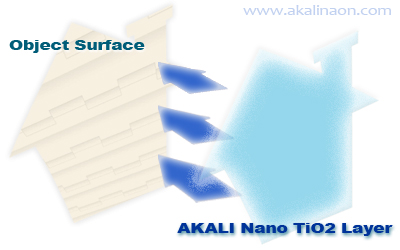| Technology >> Photocatalyst >> Antimicrobial Theory | ||||
|---|---|---|---|---|
| Antimicrobial Theory | ||||
 |
||||
| When TiO2 absorbs light irradiation and releases free radicals such as O2-. ‧OH, H2O2). The free radicals attach cell membrane and cause cell membrane damage. This potent oxidizing power characteristically result in the lysis of bacteria. |
||||
| 1) Sprayed a thin layer of Nano TiO2 on furniture or substrate (wall, board, and compartment materials) | ||||
| 2) When Nano TiO2 is subjected to light exceeding the material's band gap, it generates electron-hole pairs | ||||
| 3) O2 and H2O, surrounding the layer of TiO2, connect with electron and hole and generate super active substances (O2-. ‧OH, H2O2 ) | ||||
| 4) Super active substances attach on outer membrane of harmful micro-organism (Bacteria, Viruses, and Fungi) and attack their cell membrane. | ||||
| 5) The membrane of micro-organism damage and stop effectively the duplication of themselves. The potent oxidizing power finally result in micro-organism death. |
||||